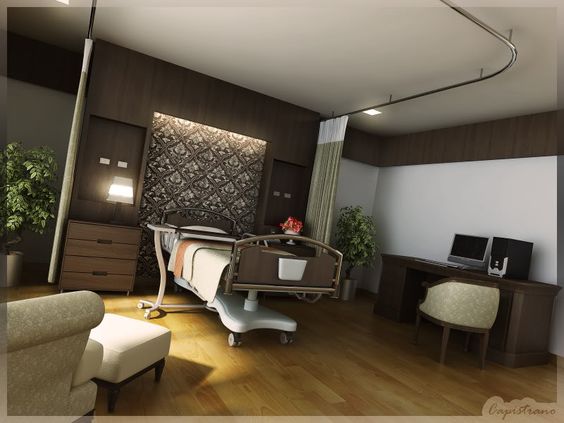
25 Mar Hospitals Can Help People Heal Faster by Simply Being Quiet
As a Feng Shui consultant helping healthcare facilities create an integrative and healing space, I look at factors that cause environmental stress. One factor often on the short end of consideration is noise.
All aspects of surroundings make an impact on whoever is in those surroundings. Although Feng Shui is typically relegated to the physical environment—color, furniture placement, door position, etc.—I have often suggested adding the element of sound. A wind-chime can enhance an outdoor experience; a more pleasant doorbell might eliminate an annoying situation; or a fountain can provide white noise to counteract loud traffic sounds. Creating an integrative space includes all aspects of the experience—even sound.
Environmental psychologist Roger Ulrich became known for his seminal work in 1984 on the connection between the hospital room and the rate of healing of a patient. Besides his experiments on the positive impact of nature on a person’s rate of healing, he and health psychologist Craig Zimring presented their findings that one of the biggest stressors in a hospital environment is noise.
Esther Sternberg, M.D., in her book Healing Spaces: The Science of Place and Well-Being states that hospital noise generally exceeds the recommended level of 35 decibels, which is comparable to a quiet office. Typically it falls into the range of 45 – 68 decibels, ranging from what a normal room conversation would measure to listening to loud music through headphones.
Dr. Sternberg cites a study done in 2005 at St. Mary’s Hospital (Mayo Clinic) in which nurses placed hidden noise gauges in the Surgical Thoracic Intermediate-Care Unit. The sound level was particularly high when there was a shift change in staff and when heavy equipment was being moved. At times the decibels reached 98 decibels—comparable to the sound of a motorcycle.
Everyone is affected by loud noises, but particularly those who are healing from surgery or illness. Heart rate, blood pressure, temperature and other measures of stress all escalate when impacted by external sounds. Not to mention, noise interferes with sleep—falling asleep, staying asleep and quality of sleep. And there’s no question that sleep is a necessary component for healing.
The conjecture that Dr. Sternberg puts forth about why hospitals are so noisy is that historically hospitals were not places where people went to heal but were places where people went to die. Healing was not part of any expectations.
Also, patients often died from infections while being in the hospital. So in an effort to make the environment more sterile, surfaces were covered with materials that were easily cleaned and would not spread germs. But as the surfaces became more germ-free and pristine, they also became more reflective of noise, bouncing sound-waves throughout the halls and in patient rooms.
Now, times are different. Most people survive their hospital stay and, in fact, go there to get better.
Here are some options that could be considered to make hospitals quieter:
- Absorbent ceiling tiles both in the patient room and in the hallways
- Fabrics that absorb sound, such as quilts and blankets that are typically hand-made used on a reclining chair or for visitor seating
- Flooring that is sound resistant yet easy to clean
- Single-bed patient rooms
- White noise which can distract the ear from whatever is going on around them; this may involve a music station accessed through the television
- Music therapy would not only distract from outside noise but could also provide a direct experience of sound vibration to uplift and sooth the patient.
The question of hospital noise is not an easy issue to address. Despite measures to assure that the patient’s environment is one of healing, a raucous visit from friends or relatives can upset all measures that have been taken. Plus in the normal course of a day staff need to talk to one another and emergencies happen requiring that equipment be hauled down a hallway in a moment’s notice.
There will always be exceptions. However, creating a healing, integrative space to assure quiet recuperation should always be the goal.
